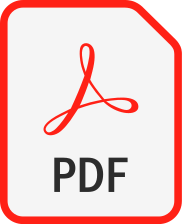ISSN (Online): 2812-9709
Vol.3, No.3, 2024: pp.100-109
Numerical analysis of oil characteristics in hydraulic recoil braking mechanisms
Authors:
Lai Thanh Tuan1
, Nguyen Minh Phu1
Received: 27 December 2023
Revised: 8 March 2024
Accepted: 27 May 2024
Published: 30 September 2024
Abstract:
In this article, a mathematical model is established to determine the working parameters of a hydraulic recoil mechanism, considering the characteristic parameters of the oil. The parameters considered in this study are oil compression and oil temperature. Parameters such as recoil braking force, recoil velocity, recoil length, and recoil time are calculated in the cases of incompressible oil, compressible oil, and different working temperatures of oil. Numerical calculations are applied to 85 mm anti-tank artillery. Calculation results show that oil compression mainly affects the early stages of the recoil movement of the recoil part. When considering the oil’s compressibility, the maximum recoil brake force and maximum hydraulic brake force values are 73406 N, and 61052 N, respectively – reduced by 4.3% and 5.2% compared to the case of uncompressed oil. In addition, the working temperature of the oil also significantly affects the working parameters of the hydraulic recoil mechanism. The calculation results are a reliable theoretical basis for choosing oils suitable for the harsh working conditions of the hydraulic recoil mechanism during maintenance.
Keywords:
Numerical analysis, Oil compression, Oil temperature, Hydraulic recoil mechanism, Maintenance
References:
[1] P. Zhao, Y. Li, Y. Jia, X. Kang, R. Wang, Parameter optimization of a certain grenade launcher using virtual prototype technology. Journal of Physics: Conference Series, 1213(2), 2019: 022029. https://doi.org/10.1088/1742-6596/1213/2/022029
[2] Y.D. Yang, P.L. Zhang, J.P. Fu, X.D. Zhang, C. Wang, Performance of a gun recoil mechanism considering liquid cavitation. Journal of Vibration and Shock, 31(20), 2012:94-98.
[3] L.F. Xie, J.G. Zheng, C.J. Chen, C.J. Ding, Numerical Simulation of Cavitation Flow in Consideration of Recoil Mechanism. Machine Building and Automation, 43(06), 2014: 129-132.
[4] K. Cui, X. Huang, B. Ning, Y. Sun, X. Zhang, Study on the simulation and variation law of particle erosion velocity of flow field in recoil mechanism. DEStech Transactions on Materials Science and Engineering, 2021.
https://doi.org/10.12783/dtmse/ameme2020/35527
[5] Y. Yang, L. Ding, J. Xiao, G. Fang, J. Li, Current Status and Applications for Hydraulic Pump Fault Diagnosis: A Review. Sensors. 22(24), 2022: 9714. https://doi.org/10.3390/s22249714
[6] M. Han, Y. Liu, D. Wu, X. Zhao, H. Tan, A numerical investigation in characteristics of flow force under cavitation state inside the water hydraulic poppet valves. International Journal of Heat and Mass Transfer, 111, 2017: 1-16.
https://doi.org/10.1016/j.ijheatmasstransfer.2017.03.100
[7] D.P. Nguyen, M.P. Nguyen, B.T. Phan, V.B. Vo T.H. Nguyen, Study on the Influence of Some Structural Features of the Stabilizer Fins on the Stability of Unguided Rockets. 2023 International Conference on Military Technologies (ICMT), Brno, Czech Republic, 2023: 1-5. https://doi.org/10.1109/ICMT58149.2023.10171280
[8] K. Cui, Y. Sun, M. Zhang, Z. Wen, Study on Failure Mechanism of Throttling Ring Based on Spectral Test Analysis Technique. Journal of Physics: Conference Series, 1600, 2020: 12-55. https://doi.org/10.1088/1742-6596/1600/1/012055
[9] V.D. Tien, M. Macko, S. Procházka, V.V. Bien, Mathematical Model of a Gas-Operated Machine Gun. Advances in Military Technology, 17(1), 2022: 63-77. https://doi.org/10.3849/aimt.01449
[10] V.V. Bien, M. Macko, M.H. Dao, Experimental Study of Automatic Weapon Vibrations when Burst Firing. Problems of Mechatronics. Armament, Aviation, Safety Engineering, 12(4), 2021: 9-28. https://doi.org/10.5604/01.3001.0015.5984
[11] Y. Sun, L. Li, F. Xie, Research on recoil dynamic characteristics of a Gatling gun automatic machine. Journal of Physics: Conference Series, 1345(3), 2019: 032042. https://doi.org/10.1088/1742-6596/1345/3/032042
[12] D.V. Doan, V.V. Bien, M.A. Quang, N.M. Phu, A Study on Multi-Body Modeling and Vibration Analysis for Twin-Barrel Gun While Firing on Elastic Ground. Applied Engineering Letters, 8(1), 2023: 36-43.
https://doi.org/10.18485/aeletters.2023.8.1.5
[13] H. Chang, X. Xie, Y. Zheng, S. Shu, Numerical study on the cavitating flow in liquid hydrogen through elbow pipes with a simplified cavitation model. International Journal of Hydrogen Energy, 42(29), 2017: 18325-18332.
https://doi.org/10.1016/j.ijhydene.2017.04.132
[14] N.V. Dung, Study on the dynamic of recoil and counter-recoil combination mechanism. Journal of Science and Technology, 174(1), 2016: 104-110.
[15] C.C. Di, Z.Q. Gu, Simulation Research on Hydraulic Resistance of Recoil Mechanism Based on Cavitation. Machine Building and Automation, 46(06), 2017: 114-117.
[16] D.D. Tran, M.P. Nguyen, V.B. Vo, D.P. Nguyen, M. Macko, M. Vitek, Analysis of gas flow losses in a gas-operated gun. 2023 International Conference on Military Technologies (ICMT), Brno, Czech Republic, 2023, pp.1-7.
https://doi.org/10.1109/ICMT58149.2023.10171337
[17] X.-D. Zhang, P.-L. Zhang, J.-P. Fu, C. Wang, Y.-D. Yang, Application Analysis of k-ε Turbulence Models on Numerical Simulation of Internal Flow of Recoil Brake. Explosion and Shock Waves, 31(05), 2011: 516-520.
[18] Z.J. Chen, A.J. Przekwas, A coupled pressure-based computational method for incompressible/compressible flows. Journal of Computational Physics, 229(24), 2010: 9150- 9165. https://doi.org/10.1016/j.jcp.2010.08.029
[19] H. Wang, H. Wang, F. Gao, P. Zhou, Z.J. Zhai, Literature review on pressure–velocity decoupling algorithms applied to built-environment CFD simulation. Building and Environment, 143, 2018: 671-678.
https://doi.org/10.1016/j.buildenv.2018.07.046
[20] Y. Deng, D. Zhang, Y. Liu, X. Fu, J. Wu, A novel efficient segregated pressure-based algorithm for steady-state incompressible flow. Numerical Heat Transfer, Part B: Fundamentals, 82(1-2), 2022: 18-40.
https://doi.org/10.1080/10407790.2022.2063645
[21] C.C. Di, Z.Q. Gu, Simulation Research on Hydraulic Resistance of Recoil Mechanism Based on Cavitation. Machine Building and Automation, 46(06), 2017: 114-117.
[22] N.H. Phan, S.R. Patil, S. Gawade, S.S. Shirguppikar, N.T. Ly, N.C. Tam, L.T.P. Thanh, Design of ER damper for recoil length minimization: A case study on gun recoil system. Journal of the Mechanical Behavior of Materials, 31(1), 2022: 177-185.
https://doi.org/10.1515/jmbm-2022-0017
[23] T.V. Tan, N.M. Phu, V.V. Bien, Investigate the effect of the throttling ring wear on the movement of the artillery on the tank when firing. Journal of Science and Technology, 60(5), 2024: 82-86. http://doi.org/10.57001/huih5804.2024.161
[24] T. Kikuchi, I. Abe, A. Inoue, A. Iwasaki, K. Okada, Characteristics of a magnetorheological fluid in high shear rate. Smart Materials and Structures, 25(11), 2016:115021. http://doi.org/10.1088/0964-1726/25/11/115021
[25] J. Balla, V.D. Nguyen, Z. Krist, M.P. Nguyen, V.B. Vo, Study Effects of Shock Absorbers Parameters to Recoil of Automatic Weapons. 2021 International Conference on Military Technologies (ICMT), Brno, Czech Republic, 2021: 1-6.
https://doi.org/10.1109/ICMT52455.2021.9502825
[26] W. Miao, L. Qian, L. Chen, Hydraulic node model and parameter identification of a dull recoil brake. Journal of Mechanical Science and Technology, 36, 2022: 5511-5521. https://doi.org/10.1007/s12206-022-1016-7
[27] Z. Jiang, G. Tao, Z. Li, P. Wen, Study on the asynchronous effect of projectile starting and blocking sheet opening in recoilless gun. Journal of Vibration and Control, 0(0), 2023. https://doi.org/10.1177/10775463231203280
[28] N.D. Phon, V. Van Bien, N.M. Phu, N.T. Dung, T.M. Le, The thermodynamic model of a solid-fuel rocket engine taking into account heat loss. JMST Advances, 2024. https://doi.org/10.1007/s42791-024-00080-2
[29] V.V. Bien, N.D. Phon, N.M. Phu, Study of the Effect of Some Muzzle Device Types on the Firing Force and Firing Impulse. Archives of Advanced Engineering Science, 2023: 1-8. https://doi.org/10.47852/bonviewAAES32021349
[30] K.D. Tuy, N.V. Trung, N.V. Dung, Artillery system design basis. Le Quy Don Technical University, Hanoi, Vietnam, 2009.
© 2024 by the authors. This work is licensed under a Creative Commons Attribution-NonCommercial 4.0 International License (CC BY-NC 4.0)
![]()
How to Cite
L.T. Tuan, N.M. Phu, Numerical Analysis of Oil Characteristics in Hydraulic Recoil Braking Mechanisms. Advanced Engineering Letters, 3(3), 2024: 100-109.
https://doi.org/10.46793/adeletters.2024.3.3.2
More Citation Formats
Tuan, L.T., & Phu, N.M. (2024). Numerical Analysis of Oil Characteristics in Hydraulic Recoil Braking Mechanisms. Advanced Engineering Letters, 3(3), 100-109.
https://doi.org/10.46793/adeletters.2024.3.3.2
Tuan, Lai Thanh, & Nguyen Minh Phu. “Numerical Analysis of Oil Characteristics in Hydraulic Recoil Braking Mechanisms.“ Advanced Engineering Letters, vol. 3, no. 3, 2024. pp. 100-109.
https://doi.org/10.46793/adeletters.2024.3.3.2
Tuan, Lai Thanh, and Nguyen Minh Phu. “Numerical Analysis of Oil Characteristics in Hydraulic Recoil Braking Mechanisms.“ Advanced Engineering Letters, 3 (3), 100-109.
https://doi.org/10.46793/adeletters.2024.3.3.2
Tuan, L.T., and Phu, N.M. (2024). Numerical Analysis of Oil Characteristics in Hydraulic Recoil Braking Mechanisms. Advanced Engineering Letters, 3(3), pp. 100-109.
doi: 10.46793/adeletters.2024.3.3.2.






